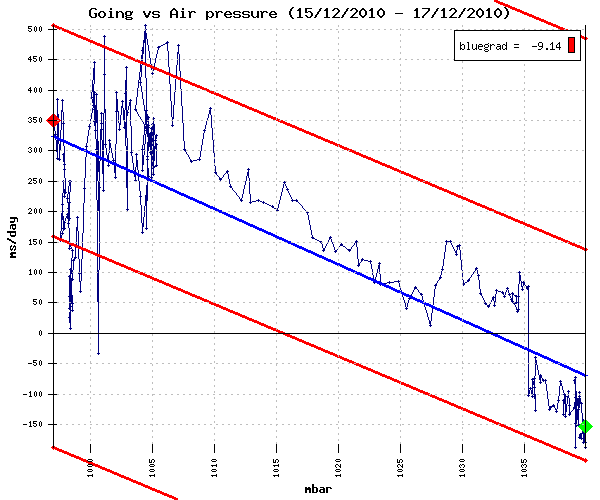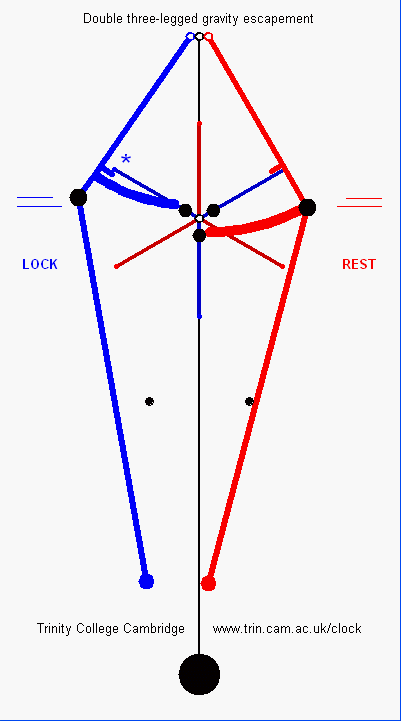
Best fit to data (blue line). Reference gradient (red lines):-8.6ms/day/mbar.
Going varies with pressure because of drag, added mass and buoyancy. Barometric compensator fitted 28 March 2010 should fix this.
- 17 Dec 2010 [09:05]
- It is good to see a prediction come true! Interesting to note, with a longer period of the door being open, that the amplitude looks to be increasing exponentially by about 0.4mrad at a time constant of about 20 minutes. The going does not show any decay - just a step of about -450ms/day. This reinforces the theory that the change in going is due to a change in length of the outer tube due to thermal expansion - corresponds to a temperature change of +1C. The puzzle to figure out now is a mechanism for the observed change in amplitude that corresponds to a change of +1C.
- 17 Dec 2010 [07:40]
- I asked the bedmaker to leave the door open for 20 minutes today [link] . Another concern: is the barometric compensator working [link] ? The blue data points should form a horizontal line - but they are following the -8ms/day per mbar lines exactly as we had before the compensator was installed.
- 15 Dec 2010 [14:50]
- ADJUST: +200 ms/day to 27400 - not getting this nailed as quickly as I would like. Hopefully then clock will drift toward zero over the next few days and then I will make a final adjustment in the new year.
Download data


